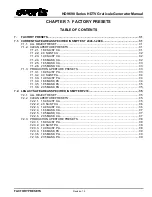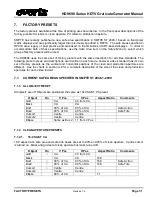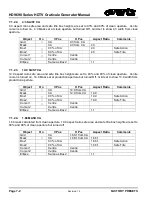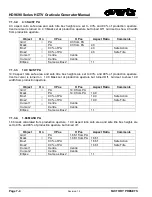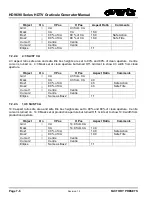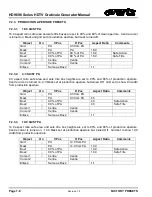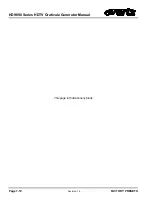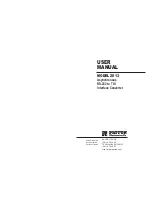
HD9690 Series HDTV Graticule Generator Manual
SAFE AREA OPERATIONAL PRACTICES
Revision 1.5
Page 8-1
8.
SAFE AREA OPERATIONAL PRACTICES
The following sections summarize some of the recommended practices for defining safe action and safe
title areas in use throughout the world. This information is provided to guide the user in setting up the
correct graticule sizes for their application.
The information provided is current at the time of writing and may have been
updated by the respective standards body. The user is advised to obtain the
current version of the document from which this information was obtained.
8.1.
FREE TV AUSTRALIA OPERATION PRACTICE OP-36
This Operational Practice recommends the format and quality of video and audio associated with the
videotape delivery of SDTV and HDTV commercials to the Australian Terrestrial Broadcast Industry. Its
reference is to product of both film and video camera origin. The information provided in this section is
taken from Appendix B of the document
8.1.1. HDTV – SAFE ACTION AND SAFE GRAPHIC AREAS
The recommended HDTV ‘Safe Action’ and ‘Safe Graphic’ areas are defined by the following three
diagrams.
Diagram 1 is the HD transmission situation, 16:9 Shoot Protect 16:9, with a line length of 1920 pixels. The
safe areas are calculated to this base. This will not be the normal situation for some time to come.
Diagrams 2 and 3 represent the situation where the HD signal has been down-converted to SD for a 4:3
simulcast service. The SD 4:3 service will involve some form of analog interface where the wide line
blanking used produces an active line of 702 pixels. This means that in the HD signal only the central
1872 pixels would be effectively used in the downconverted signal.
Diagram 2 is 16:9 Shoot Protect 4:3. The line length base for calculating Safe Areas is 1872 pixels
Diagram 3 is 16:9 Shoot Protect 14:9. The line base for calculating Safe Area is 1872 pixels. The Safe
Action Area is 14:9 but the Safe Graphics Area has been retained as per the 4:3 central zone. This is to
accommodate STBs which may produce a 4:3 centre cut when driving a 4:3 display.
The overscan of domestic displays is assumed to be 7% of overall picture width or height (i.e. 3.5% at
each edge) but any one picture edge should not exceed 4% of total picture width or height.

